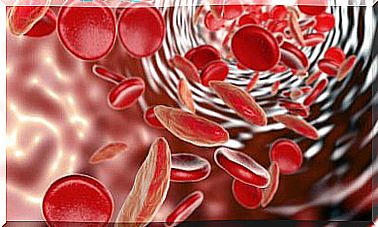Electromyogram: Everything You Need To Know
Electromyography can be defined as the graphic recording technique of electrical activity produced by skeletal muscles. This electrical activity is known as an electromyogram (EMG). At a diagnostic level, the test allows detecting muscle or neurological damage, degenerative diseases and diabetic neuropathy, among others.
For informational purposes, we are going to use the concepts electromyogram and electromyography interchangeably, since there does not seem to be an exact consensus in medical portals on which is the most indicated. Still, it appears that the term “electromyography” is used to designate the technique used, while the electromyogram is the test and the result.
Beyond details at the linguistic level, it is clear that these procedures are very useful to measure the electrical activity of muscles and nerves. If you want to know everything about the test and in which patients it is indicated, continue reading.
What is an electromyogram (EMG)?
As indicated by the US National Library of Medicine, electromyography and nerve conduction studies are used to measure muscle and nerve activity. Nerves send electrical signals to skeletal muscles to contract, and when they react, they emit signals that can be quantified.
The electrical source recorded is the muscle membrane potential, that is, the difference in potential between the inside and outside of the muscle cells. The potential ranges measured by EMG are from 50 μV to 20-30 mV, depending on the type of muscle being observed.
The electromyogram is used to find out if a patient has a muscle, nerve, or both types of problem. However, it is usually done in conjunction with a nerve conduction study. Both differ between them by the following premises:
- EMG examines the electrical signals of the muscles when they are at rest and at work.
- Nerve conduction studies measure how quickly and effectively nerves transmit electrical signals.
We are facing 2 complementary processes, but they are not measured in the same way. For example, EMG requires the use of a needle electrode, while nerve conduction studies are done with discs attached to the skin.
Why is an electromyogram performed?
According to the World Health Organization (WHO), approximately 1.710 million people worldwide have some type of musculoskeletal disorder. This makes musculoskeletal problems the leading cause of disability on the planet, with low back pain being the main culprit.
These disorders limit the mobility, dexterity, work capacity and autonomy of patients who present them in their most severe forms. Therefore, making a proper diagnosis and acting quickly is essential.
Here is the group of symptoms that may indicate the need for an electromyogram.

1. Muscle weakness
Muscle weakness or myasthenia, as its name implies, is characterized by the lack of strength of the patient’s musculature. This can be true or acquired, that is, it can be caused by dystrophies in the muscle tissue or by emotional conditions.
There are a total of 5 degrees of muscle weakness, the fifth being a contraction of normal force and the first a total absence of it. The electromyogram can help place the patient on some of the values on this scale.
2. Tingling and numbness of extremities and face
Numbness and tingling are usually caused by staying too long in one position, but if these are continuous or too recurrent, a pathology can be suspected. Among them we find injuries to nerves, pressure on spinal nerves, herpes zoster infection and lack of blood supply.
3. Muscle cramps, spasms and contractions
As indicated in the MSD Manuals, a cramp is a brief, involuntary and painful contraction of a muscle or group of muscles. Most of them are benign, as they occur for unknown causes at night or during times of demanding physical activity.
However, some nervous and metabolic disorders, such as hypothyroidism, low levels of electrolytes in the body, dehydration and other conditions can cause spasms to appear more than normal.
4. Muscle paralysis
Paralysis is the loss of muscle function in one part of the body. This symptom is serious and requires an immediate medical approach. From severe injuries to strokes, paralysis is an entity that does not bode well for a very positive prognosis.
How is an electromyogram performed?
For the test, the following steps are followed in the relevant hospital:
- The patient should sit or lie down on a table or stretcher. The professional will thoroughly clean the area to be examined.
- After that, a needle electrode is introduced into the muscle area of interest. The patient may feel mild pain or discomfort at this point.
- When the electrodes are in place, the machine used records the activity of the muscle at rest. The practitioner will then ask the patient to contract the muscle tissue of interest. This is how changes in the membrane potential and hence the electrical intensity are recorded.
- The needle electrode can be inserted into other muscle tissues to quantify its activity.
- Electrical activity is seen in the form of wavy, pointed lines on the machine’s video screen. It can also be heard through a loudspeaker.
An electromyogram can last approximately 30 to 60 minutes. It should be noted that this test is usually accompanied by a nerve conduction study that will last from 15 minutes to more than 1 hour, depending on the muscles and nerves being studied.
How to prepare for the test?
If the patient has a pacemaker or a cardiac defibrillator, it should be clearly communicated to the professional. In general, these people have electrical stimulation avoided in the neck area.
On the other hand, it is recommended to wear loose clothing that is easy to handle to allow the professional to access the muscle group to be analyzed more quickly. It is also essential not to use lotions, perfumes and other substances on the affected area a couple of days before the test.

Possible risks
The risks of this test are almost nil, as it is a minimally invasive diagnostic method. In any case, the Mapfre Health portal shows us some small adverse effects that should be taken into account:
- Minimal bleeding at the electrode application point.
- Infection in the area of application.
- Local allergic reaction after needle insertion.
Depending on the sensitivity of each patient, the electromyogram is a study that can be annoying and painful. In any case, in most cases the discomfort is tolerable and the only side effect is the appearance of a small bruise.
A simple and easy test to perform
As you may have seen, the electromyogram is a simple and easy test that will not take more than an hour of your time in almost any scenario. In addition, no special preparation is required to perform it. At most, keep the skin naturally sanitized and go to the consultation with loose clothing.
It is very useful for detecting failures and dysfunctions at the muscular and neurological level. Many of these pathologies are treatable if they are detected early, so if you feel that your muscles are weak or you have problems when making efforts, do not hesitate to go to the medical consultation.









